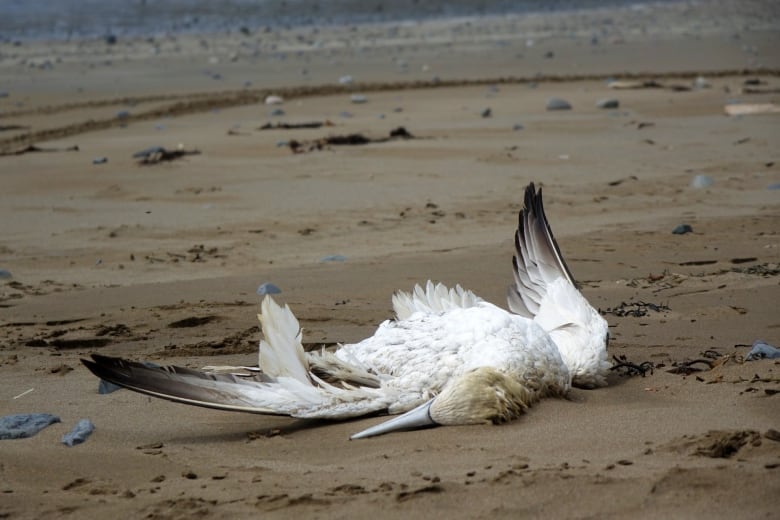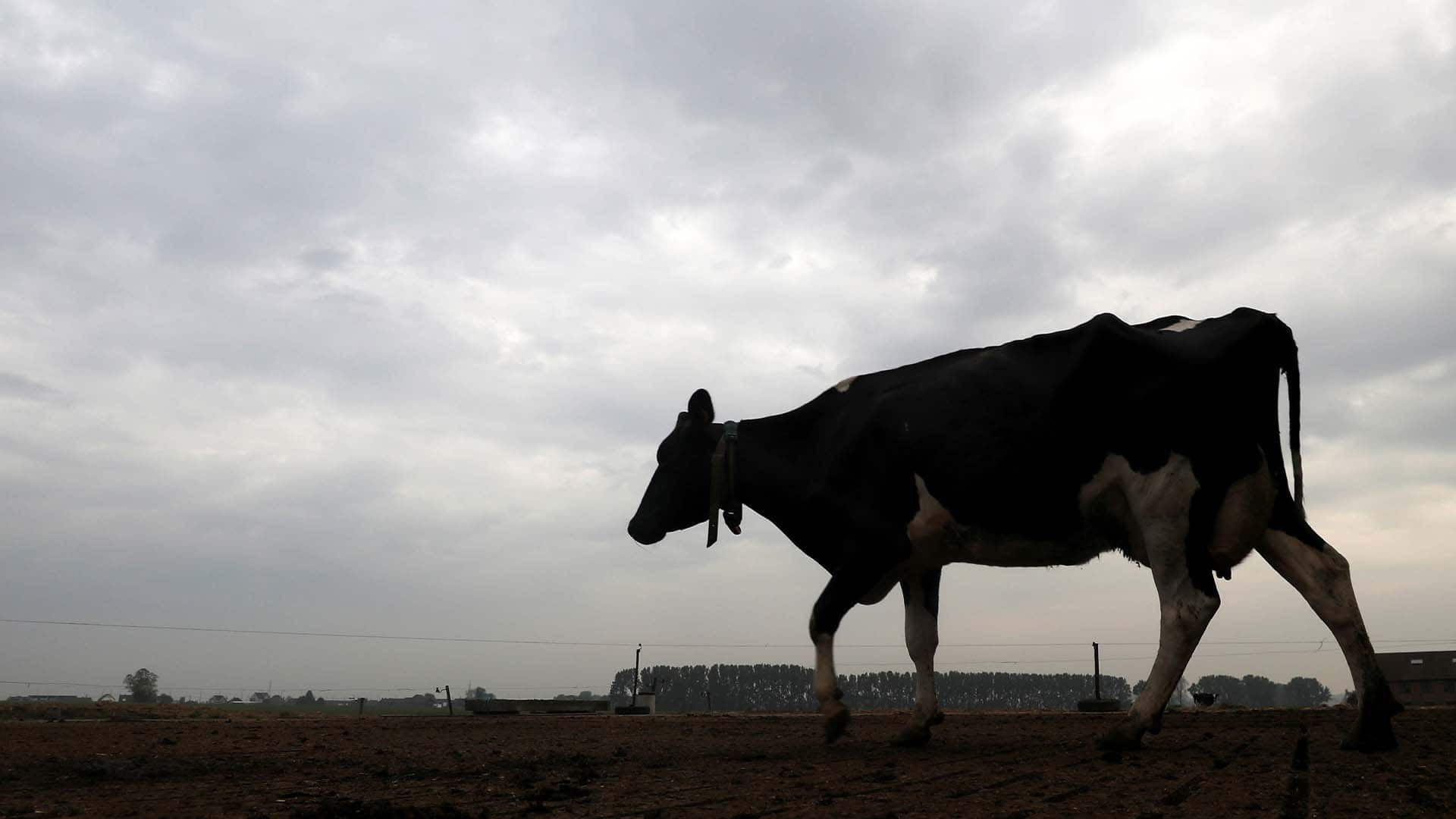This story is part of CBC Health’s Second Opinion, a weekly analysis of health and medical science news emailed to subscribers on Saturday mornings. If you haven’t subscribed yet, you can do that by clicking here.
As early as 1997, just a year after H5N1 was first discovered, there were warning signs this form of avian flu was capable of wreaking havoc far beyond birds.
That year, poultry outbreaks in China and Hong Kong were linked to 18 human infections — and a third of those people later died.
In the decades that followed, alarm bells from the scientific community rang louder and louder. H5N1 began infecting dozens more species, from tens of millions of wild and farmed birds, to raccoons and foxes, to seals and sea lions to, most recently, U.S. dairy cattle. The virus eventually caused more than 800 human infections around the world with a stunning death rate — for known cases — of roughly 50 per cent.
“The increasing host range of the virus, [its] potential spread among mammals and between a mammal and a human, its wide geographical spread, and the unprecedented scale of the outbreaks in birds, raise concerns about the pandemic potential” of H5N1, warned a May editorial in leading medical journal The Lancet Infectious Diseases.
Given those factors, an avian flu pandemic may feel not just inevitable, but imminent.

Yet the reality is murkier. Though influenza viruses have a knack for rapid evolution, this one hasn’t managed to adapt to sustain human-to-human transmission, despite circulating for the last three decades.
“But that could still potentially happen,” said epidemiologist Timothy Sly, a longtime influenza researcher and professor emeritus with Toronto Metropolitan University’s school of public health.
“And if it ever did happen… it would be a global health catastrophe.”
‘Are we watching the beginning?’
So how likely is that kind of worst-case scenario? And if H5N1 does start spreading person to person — in a month, or a year, or a decade — what would its impacts really be?
CBC News talked to several researchers, including those studying H5N1 now and others who’ve followed influenza trends for decades, to help unpack the crucial unanswered questions around this virus’s capacity for sparking a possible pandemic.
“Are we watching the beginning? Is this where we’re seeing repeated spillovers that one day take off? Or is it like in COVID, where suddenly there’s a cluster of human cases and then it’s too late?” questioned Louise Moncla, an avian flu researcher and assistant professor at the University of Pennsylvania.

There’s no way to know, she says.
That’s why scientists like Moncla are watching the virus closely to understand its transmission patterns and ongoing evolution, all to spot early signals that a storm may be brewing.
The spread of H5N1 among U.S. dairy cattle in recent months, and data trickling out from the department of agriculture, offered a treasure trove of genetic sequencing for scientists to sort through.
Several research teams, Moncla’s included, recently reached similar conclusions: The virus likely spilled from birds into cows as far back as late 2023, and spread undetected among cattle for months before the first cases were reported this March.
Moncla’s ongoing analysis of the sequences released to date also outlines how the currently circulating form of H5N1 — a lineage known as 2.3.4.4b — features some concerning mutations.
“There’s no smoking guns,” she quickly said. “There are some mutations that have occurred that may enhance replication in mammals, but some of the mutations that we would be really worried about, we’re not seeing.”
The Current19:35Could H5N1 become the next pandemic?
Those include adaptations that would allow this virus to better bind to human-specific receptors in the upper airway, which would give it the ability to transmit easily between people. Without that kind of notable shift, H5N1 infections in humans usually end up hitting dead ends.
Take the recent instance of a worker infected in Texas. An overview of the case, published Friday in The New England Journal of Medicine, outlined how the worker was in close contact with sick dairy cattle, and developed eye inflammation and broken blood vessels as a result. The virus identified in the worker’s specimen also had a previously seen genetic change that’s associated with viral adaptation to mammalian hosts.
But the individual didn’t develop any respiratory symptoms — nor did any household contacts fall ill.
So what would it take for onward transmission to occur? Very little, evolutionarily speaking.
“Influenza is a virus that does mutate fairly easily,” said Dr. Jennifer Guthrie, an associate professor with Western University in London, Ont., who specializes in pathogen genomics and infectious diseases.
“The longer things circulate, there is always the possibility the situation could change.”
Scientists trying to confirm human cases
Despite those concerns, what’s particularly muddy right now is how a rising number of cattle infections are impacting farm workers, beyond the Texas case that occurred back in March.
Veterinarians and physicians in states with dairy cattle outbreaks told The Associated Press there are multiple reports of farm workers falling sick, but confirming cases is proving challenging for one key reason: Many workers are reluctant to get tested.
“You have groups of individuals that don’t have close contact with health care for various reasons,” said Guthrie. “Maybe they’re vulnerable populations like migrants, or language is a barrier.”
State health labs have also sent around 25 human test samples to the U.S. Centers for Disease Control and Prevention (CDC) so far, and another 100 or so workers are being monitored.
The risk of going from a few sporadic cases to “something of international concern” is “not insignificant,” CDC principal deputy director Nirav Shah said Wednesday, Politico reported.
“We’ve all seen how a virus can spread around the globe before public health has even had a chance to get its shoes on. That’s a risk and one that we have to be mindful of.”
A person in Texas who had close contact with infected dairy cattle has been diagnosed with bird flu. It’s the country’s second known human case after the virus was discovered circulating among dairy cows across at least four U.S. states for the first time.
Moncla also says the risks are real, but questions whether government data is being shared fast enough — and fully enough — to help scientists unpack what’s at stake. It’s not clear exactly how many people will be tested going forward, or how proactive officials are being to find potential new cases or clusters, she warns.
The full tally and severity of human infections could provide added insight, revealing whether there are high numbers of infected people with mild or no symptoms, or if there’s still a major evolutionary barrier — like scientists hope — that’s keeping this virus from striking humans on a regular basis.
There are also burning questions, Moncla says, about how exposure pathways play a role.
How different are these infections when someone, say, inhales large amounts of virus while slaughtering an infected chicken, compared to someone who gets sick after milking a cow? And what are the links to symptoms, from mild eye inflammation all the way to deadly respiratory illness?
“Filling in that missing gap is pretty important,” Moncla said.
Death rate remains hazy
Sly, in Toronto, also stresses the need to understand H5N1’s potential impacts, should it ever begin spreading person to person. In particular, determining its true death rate is a question the epidemiologist has been trying to answer since the early 2000s.
By that point, the World Health Organization had estimated that the case fatality rate for avian flu in humans was roughly 60 per cent. If such a death rate were to be sustained in a pandemic, Sly and other scientists wrote in a 2008 paper, H5N1 would represent a “truly dreadful scenario.”
But the team’s own analysis of surveillance data, along with blood test studies to determine prior exposure to the virus, concluded the virus’s case fatality rate in humans was likely closer to 14 to 33 per cent.
Far more human infections have been reported since then, including those that may be flying under the radar, suggesting the true death rate could be even lower still.
“Globally at least, we’re probably not catching many cases, so the denominator is, I suspect, an underestimate to some degree,” said Guthrie. “Someone having something really, really mild probably wouldn’t even know they have influenza.”
Even so, Sly warns the impact of a new flu virus sweeping through the population would grind society to a halt, causing high levels of death and illness.
The case fatality rates of prior influenza pandemics have ranged from less than one per cent, during the 1957 and 1968 pandemics, to an estimated 2.5 per cent in 1918, which studies suggest may have killed anywhere from 23 to 50 million people around the world in just a few years.
The COVID-19 pandemic, caused by a coronavirus rather than influenza, had a case fatality rate of up to 8.5 per cent in early 2020, according to one analysis, which later dropped to 0.27 per cent by late 2022.
If H5N1’s human death rate was any higher than those, Sly said, “that’s getting up there to absolutely catastrophic or disastrous terms.”
The problem, he says, is we simply don’t know exactly what’s going to happen “if this thing spreads into humans.”
Calls for enhanced surveillance, testing
Without swift intervention and active surveillance, the possibility of H5N1 infecting more humans — and gaining those fearsome adaptations allowing its onward spread — could start to rise dramatically, multiple scientists warn.
In a report published in early April, European health authorities outlined various necessary measures, including enhancing surveillance and data sharing, careful planning of poultry and fur animal farming, and preventive strategies such as the vaccination of poultry and at-risk people.
On Friday, federal officials said Canada is planning to expand its surveillance for avian flu amid the growing outbreak of H5N1 in U.S. dairy cattle, with monitoring efforts now set to include testing of milk being sold on store shelves.
But there’s concern in both the U.S. and Canada that actual government efforts aren’t going far enough.
“People working with cattle should have blood testing done, on a regular basis, to see if it’s popping up among that group,” said Sly. “Canada assumes the 49th parallel is a barrier against viruses, and it’s not.”
He says countries can’t afford to look the other way, given the possibility of this virus eventually making its last few evolutionary leaps.
“It doesn’t seem possible,” Sly said, “until suddenly it is possible.”







